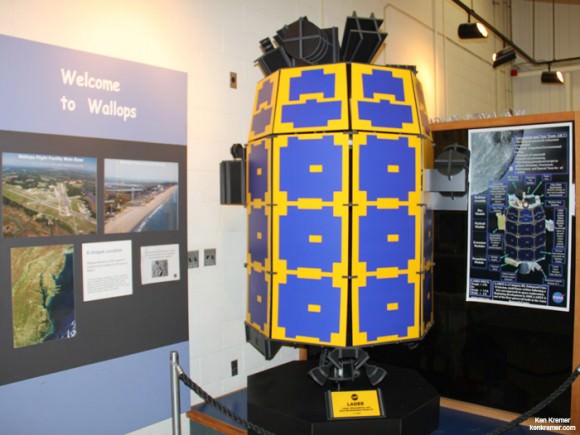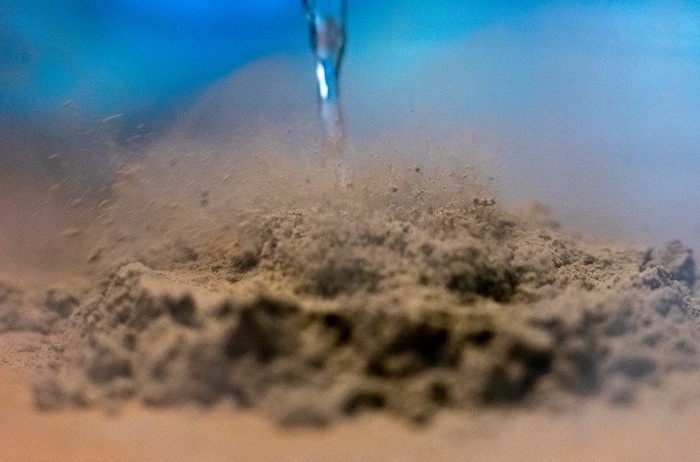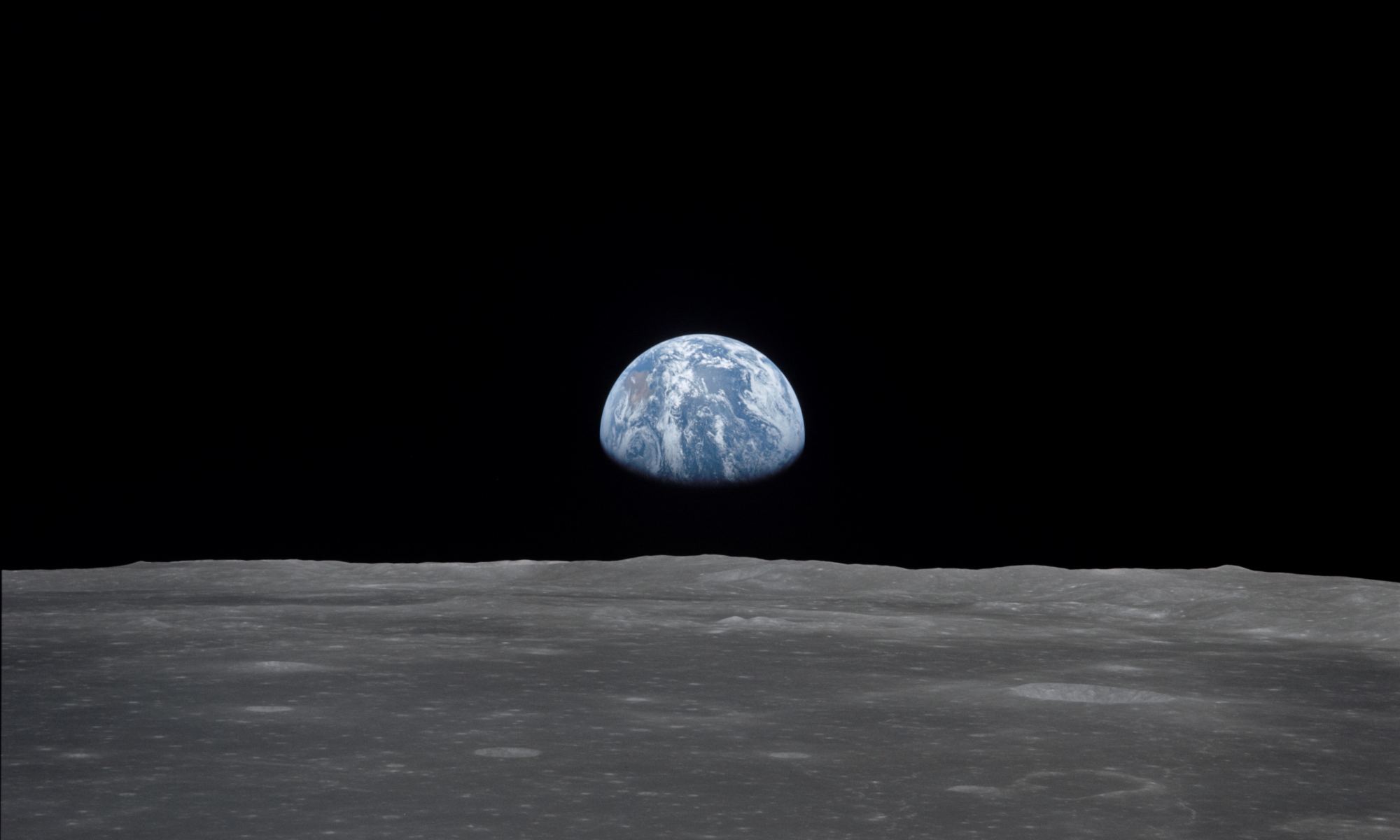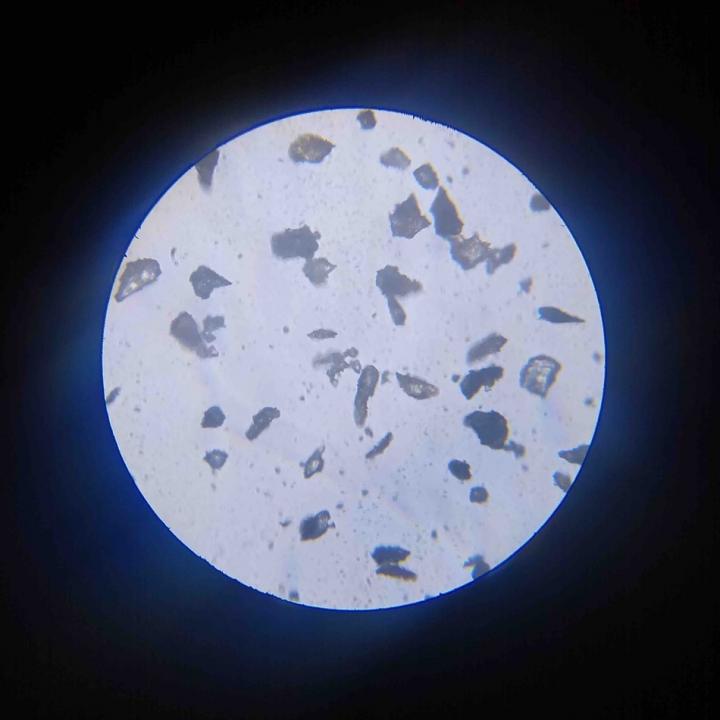One of the last times we did an article about a technology that could remove lunar dust from clothing, we opened it with a famous meme line from Star Wars. That also means we should probably avoid subjecting everyone to it again here. Still, the fact that we’ve had an opportunity to use it more than twice recently proves that removing lunar dust is a problem that has attracted a lot of attention in recent years. Artemis, NASA’s program to go back to the Moon this decade, is the cause of a lot of that attention as there are plenty of problems still to overcome. Some of those might be solved by a technique developed by a team at Washington State University (WSU) that uses every child’s gas that allows them to pound nails in with bananas – liquid nitrogen.
Continue reading “Astronauts Could Clear Lunar Dust Away with Nitrogen Spray”Dust From the Moon Could Help the Shade the Earth and Slow Down Climate Change
Alongside nuclear war or a massive impact from an asteroid, anthropogenic climate change is one of the greatest existential threats facing humanity today. With the rise in greenhouse gas emissions through the 20th century, Earth’s atmosphere continues to absorb more of the Sun’s energy. This has led to rising temperatures, rising sea levels, and increased drought, famine, wildfires, and other ecological consequences. According to the Intergovernmental Panel on Climate Change (IPCC), global temperatures will increase by an average of 1.5 to 2 °C (2.7 to 3.6 °F) by 2050.
For some parts of the world, the temperature increases will be manageable with the right adaptation and mitigation strategies. For others, especially in the equatorial regions (where most of Earth’s population lives), the temperature increases will be severe and will make life untenable for millions of people. For decades, scientists have considered using a sunshield to block a fraction of the Sun’s energy (1 to 2%) before it reaches Earth’s atmosphere. According to a new study by a team led by the University of Utah, lunar dust could be used to shield Earth from sunlight.
Continue reading “Dust From the Moon Could Help the Shade the Earth and Slow Down Climate Change”The Strange Swirls on the Lunar Surface are Somehow Related to Topography
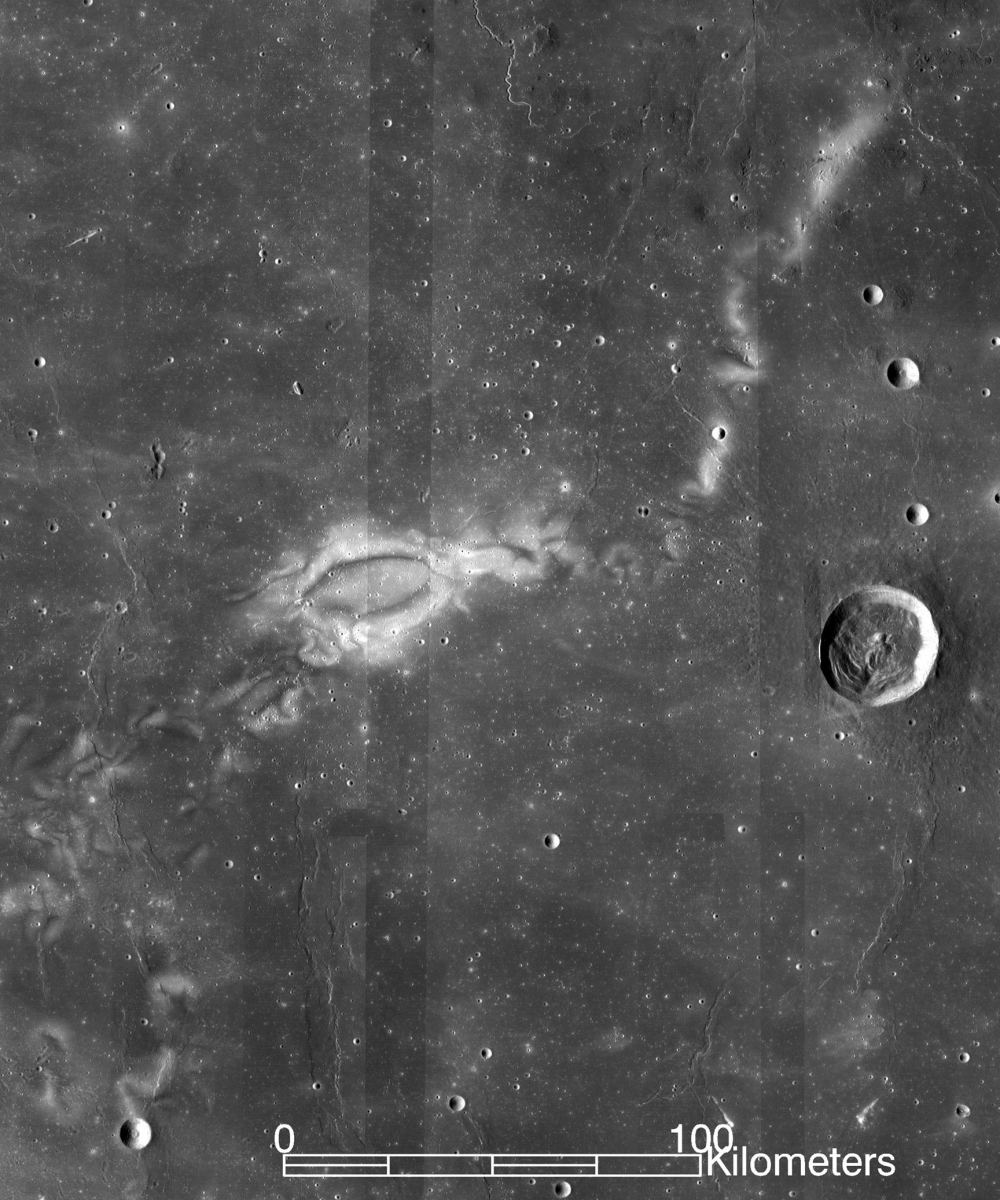
The Moon is the most studied object in space. But our nearest neighbour still holds a few mysteries. One of those mysteries is the lunar swirls. These strange serpentine features are brighter than their surroundings and are much younger. They’re not associated with any specific composition of lunar rock, and they appear to overlay other surface features like craters and ejecta.
Scientists have been puzzling over the swirls for decades, and with lunar outposts looming as a real possibility, understanding these swirls takes on new importance. Now a new study finds a link between lunar topography and the swirls.
Continue reading “The Strange Swirls on the Lunar Surface are Somehow Related to Topography”Astronauts Could Dust off Themselves and Equipment on the Moon With an Electron Beam
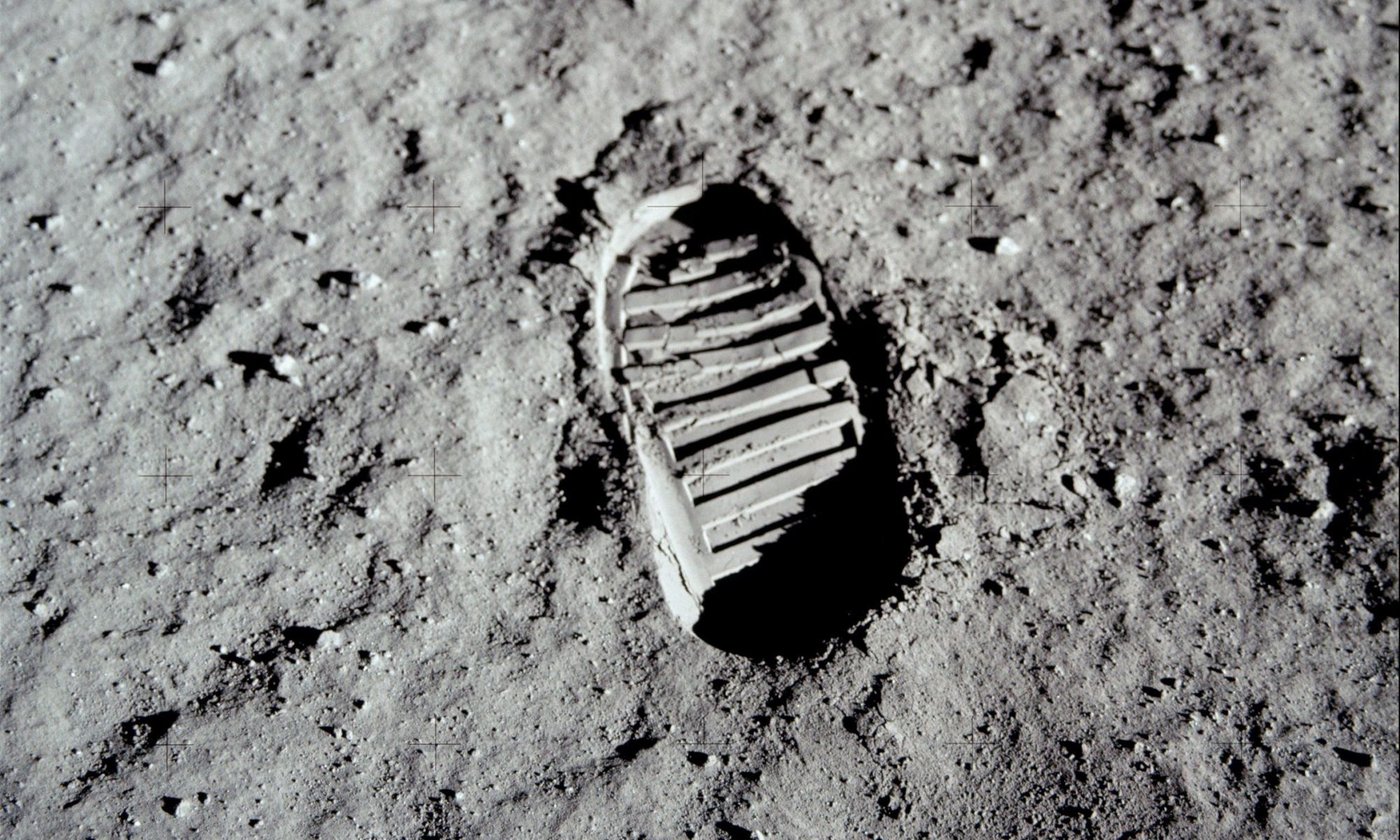
In the coming years, NASA will be sending astronauts to the Moon for the first time since the Apollo Era. This time, and as part of the Artemis Program, NASA also plans to build the necessary infrastructure to establish a sustained human presence on the Moon and eventually missions to Mars – including the Artemis Base Camp and the orbiting Lunar Gateway.
They’ll be getting some new equipment, such as the exploration Extravehicular Mobility Unity (xEMU) spacesuit and a fancy new lunar lander. Of course, as the Artemis astronauts will also have to deal with the same hazards as their predecessors – not the least of which is lunar dust (or regolith). Luckily, NASA is investigating a possible solution in the form of a handheld electron/ultraviolet (UV) device that could mitigate this hazard.
Continue reading “Astronauts Could Dust off Themselves and Equipment on the Moon With an Electron Beam”Lunar Dust is Still One of The Biggest Challenges Facing Moon Exploration
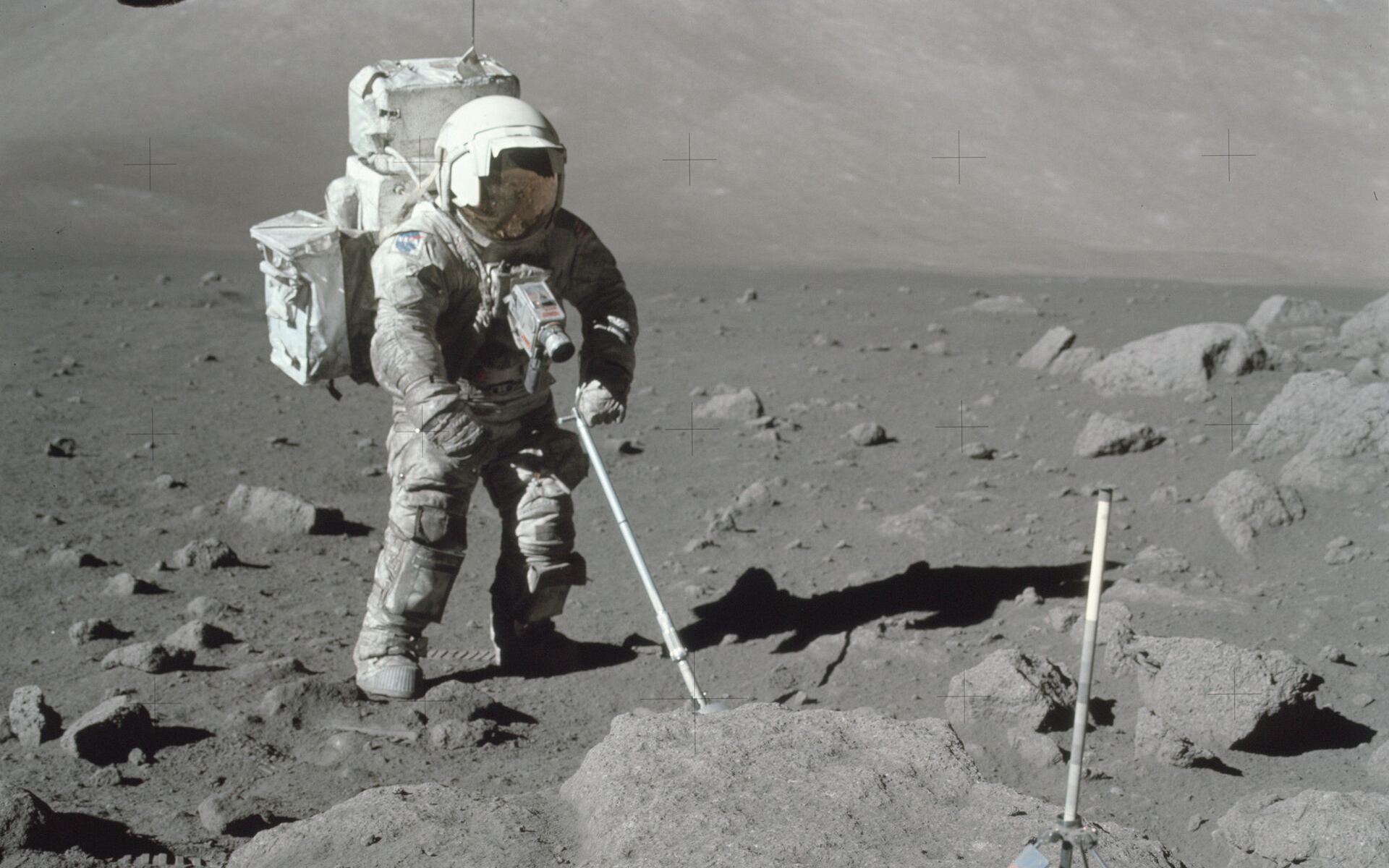
In the coming years, astronauts will be returning to the Moon for the first time since the closing of the Apollo Era. Beyond that, NASA and other space agencies plan to establish the necessary infrastructure to maintain a human presence there. This will include the Artemis Gateway in orbit (formerly the Lunar Gateway) and bases on the surface, like NASA’s Artemis Base Camp and the ESA’s International Moon Village.
This presents a number of challenges. The Moon is an airless body, it experiences extreme variations in temperature, and its surface is exposed to far more radiation than we experience here on Earth. On top of that, there’s the lunar dust (aka. regolith), a fine powder that sticks to everything. To address this particular problem, a team of ESA-led researchers is developing materials that will provide better protection for lunar explorers.
Continue reading “Lunar Dust is Still One of The Biggest Challenges Facing Moon Exploration”Finally! A Solution to Deal With Sticky Lunar Dust
As a wise man once said, “I don’t like sand. It’s coarse and rough and irritating – and it gets everywhere”. The same could be said for another material in our solar system – dust.
The kind of dust present on the moon is even more annoying than the grains that bothered Anakin Skywalker on Tatooine. It is constantly bathed in solar radiation, smells like spent gunpowder, and can cause allergic reactions, as it did in some of the Apollo astronauts. It’s also notoriously difficult to clean off of surfaces. Now a team of scientists at the University of Colorado at Boulder think they have a solution that would remove lunar dust without harming the material it’s attached to. And they would do this by using a tool that sounds like it’s straight out of Star Wars – an electron beam.
Continue reading “Finally! A Solution to Deal With Sticky Lunar Dust”NASA is Testing a Coating to Help Astronauts and Their Equipment Shed Dangerous Lunar Dust

In the coming years, NASA is going back to the Moon for the first time since the Apollo Era. Rather than being a “footprints and flags” operation, Project Artemis is intended to be the first step in creating a sustainable human presence on the Moon. Naturally, this presents a number of challenges, not the least of which has to do with lunar regolith (aka. moondust). For this reason, NASA is investigating strategies for mitigating this threat.
Continue reading “NASA is Testing a Coating to Help Astronauts and Their Equipment Shed Dangerous Lunar Dust”Building Bricks on the Moon From Lunar Dust
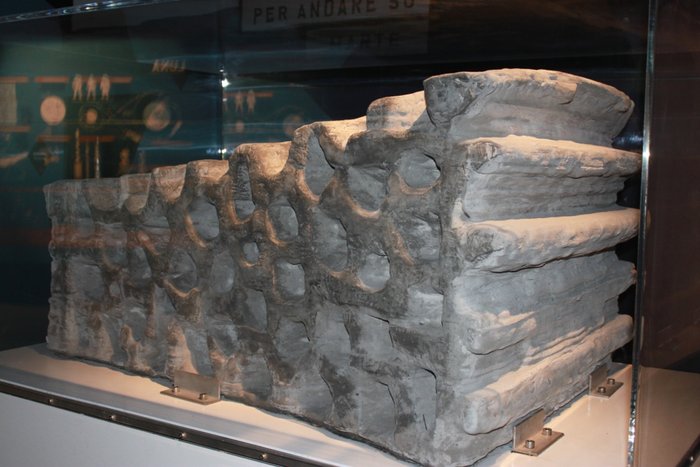
In the coming decades, many space agencies hope to conduct crewed missions to the Moon and even establish outposts there. In fact, between NASA, the European Space Agency (ESA), Roscosmos, and the Indian and Chinese space agencies, there are no shortages of plans to construct lunar bases and settlements. These will not only establish a human presence on the Moon, but facilitate missions to Mars and deeper into space.
For instance, the ESA is planning on building an “international lunar village” on the Moon by the 2030s. As the spiritual successor to the International Space Station (ISS), this village would also allow for scientific research in a lunar environment. Currently, European researchers are planning how to go about constructing this village, which includes conducting experiments with lunar dust simulants to create bricks.
To put it simply, the entire surface of the Moon is covered in dust (aka. regolith) that is composed of fine particles of rough silicate. This dust was formed over the course of billions of years by constant meteorite impacts which pounded the silicate mantle into fine particles. It has remained in a rough and fine state due to the fact that the lunar surface experiences no weathering or erosion (due to the lack of an atmosphere and liquid water).
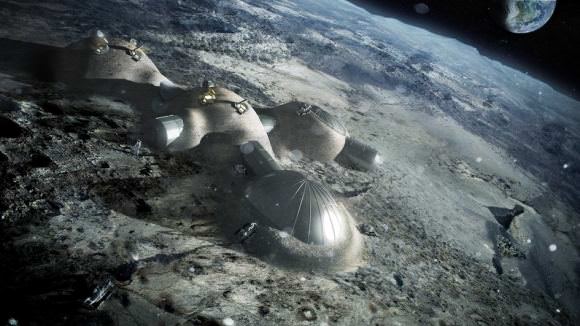
Because it is so plentiful, reaching depths of 4-5 meters (13-16.5 feet) in some places – and up to 15 meters (49 feet) in the older highland areas – regolith is considered by many space agencies to be the building material of choice for lunar settlements. As Aidan Cowley, the ESA’s science advisor and an expert when it comes to lunar soil, explained in a recent ESA press release:
“Moon bricks will be made of dust. You can create solid blocks out of it to build roads and launch pads, or habitats that protect your astronauts from the harsh lunar environment.”
In addition to taking advantage of a seemingly inexhaustible local resource, the ESA’s plans to use lunar regolith to create this base and related infrastructure demonstrates their commitment to in-situ resource utilization. Basically, bases on the Moon, Mars, and other locations in the Solar System will need to be as self-sufficient as possible to reduce reliance on Earth for regular shipments of supplies – which would both expensive and resource-exhaustive.
To test how lunar regolith would fare as a building material, ESA scientists have been using Moon dust simulants harvested right here on Earth. As Aiden explained, regolith on both Earth and the Moon are the product of volcanism and are basically basaltic material made up of silicates. “The Moon and Earth share a common geological history,” he said, “and it is not difficult to find material similar to that found on the Moon in the remnants of lava flows.”
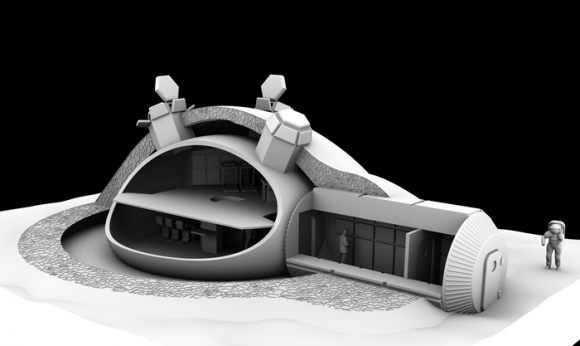
The simulant were harvested from the region around Cologne, Germany, that were volcanically active about 45 million years ago. Using volcanic powder from these ancient lava flows, which was determined to be a good match for lunar dust, researchers from the European Astronaut Center (EAC) began using the powder (which they’ve named EAC-1) to fashioning prototypes of the bricks that would be used to created the lunar village.
Spaceship EAC, an ESA initiative designed to tackle the challenges of crewed spaceflight, is also working with EAC-1 to develop the technologies and concepts that will be needed to create a lunar outpost and for future missions to the Moon. One of their projects centers on how to use the oxygen in lunar dust (which accounts for 40% of it) to help astronauts have extended stays on the Moon.
But before the ESA can sign off on lunar dust as a building material, a number of tests still need to be conducted. These include recreating the behavior of lunar dust in a radiation environment to simulate their electrostatic behavior. For decades, scientists have known that lunar dust is electrically-charged because of the way it is constantly bombarded by solar and cosmic radiation.
This is what causes it to lift off the surface and cling to anything it touches (which the Apollo 11 astronauts noticed upon returning to the Lunar Module). As Erin Transfield – a member of ESA’s lunar dust topical team – indicated, scientists still do not fully understand lunar dust’s electrostatic nature, which could pose a problem when it comes to using it as a building material.
What’s more, the radiation-environment experiments have not produced any conclusive results yet. As a biologist who dreams of being the first woman on the Moon, Transfield indicated that more research is necessary using actual lunar dust. “This gives us one more reason to go back to the Moon,” she said. “We need pristine samples from the surface exposed to the radiation environment.”
Beyond establishing a human presence on the Moon and allowing for deep-space missions, the construction of the ESA’s proposed lunar village would also offer opportunities to leverage new technologies and forge partnerships between the public and private sector. For instance, the ESA has collaborated with the architectural design firm Foster + Partners to come up with the design for their lunar village, and other private companies have been recruited to help investigate other aspects of building it.
At present, the ESA plans to build their international lunar village in southern polar region, where plentiful water ice has been discovered. To investigate this, the ESA will be sending their Package for Resource Observation and in-Situ Prospecting for Exploration, Commercial exploitation and Transportation (PROSPECT) mission to the Moon in 2020, which will be travelling as part of the Russian Luna-27 mission.
This mission, a joint effort between the ESA and Roscosmos, will involve a Russian-built lander setting down in the Moon’s South Pole-Aitken Basin, where the PROSPECT probe will deploy and drill into the surface to retrieve samples of ice. Going forward, the ESA’s long-term plans also call for a series of missions to the Moon beginning in the 2020s that would involve robot workers paving the way for human explorers to land later.
In the coming decades, the intentions of the world’s leading space agencies are clear – not only are we going back to the Moon, but we intend to stay there! To that end, considerable resources are being dedicated towards researching and developing the necessary technologies and concepts needed to make this happen. By the 2030s, we might just see astronauts (and even private citizens) coming and going from the Moon with regular frequency.
And be sure to check out this video about the EAC’s efforts to study lunar regolith, courtesy of the ESA:
Further Reading: ESA
The Moon
Look up in the night sky. On a clear night, if you’re lucky, you’ll catch a glimpse of the Moon shining in all it’s glory. As Earth‘s only satellite, the Moon has orbited our planet for over three and a half billion years. There has never been a time when human beings haven’t been able to look up at the sky and see the Moon looking back at them.
As a result, it has played a vital role in the mythological and astrological traditions of every human culture. A number of cultures saw it as a deity while others believed that its movements could help them to predict omens. But it is only in modern times that the true nature and origins of the Moon, not to mention the influence it has on planet Earth, have come to be understood.
Size, Mass and Orbit:
With a mean radius of 1737 km and a mass of 7.3477 x 10²² kg, the Moon is 0.273 times the size of Earth and 0.0123 as massive. Its size, relative to Earth, makes it quite large for a satellite – second only to Charon‘s size relative to Pluto. With a mean density of 3.3464 g/cm³, it is 0.606 times as dense as Earth, making it the second densest moon in our Solar System (after Io). Last, it has a surface gravity equivalent to 1.622 m/s2, which is 0.1654 times, or 17%, the Earth standard (g).
The Moon’s orbit has a minor eccentricity of 0.0549, and orbits our planet at a distance of between 356,400-370,400 km at perigee and 404,000-406,700 km at apogee. This gives it an average distance (semi-major axis) of 384,399 km, or 0.00257 AU. The Moon has an orbital period of 27.321582 days (27 d 7 h 43.1 min), and is tidally-locked with our planet, which means the same face is always pointed towards Earth.
Structure and Composition:
Much like Earth, the Moon has a differentiated structure that includes an inner core, an outer core, a mantle, and a crust. It’s core is a solid iron-rich sphere that measures 240 km (150 mi) across, and it surrounded by a outer core that is primarily made of liquid iron and which has a radius of roughly 300 km (190 mi).
Around the core is a partially molten boundary layer with a radius of about 500 km (310 mi). This structure is thought to have developed through the fractional crystallization of a global magma ocean shortly after the Moon’s formation 4.5 billion years ago. Crystallization of this magma ocean would have created a mantle rich in magnesium and iron nearer to the top, with minerals like olivine, clinopyroxene, and orthopyroxene sinking lower.
The mantle is also composed of igneous rock that is rich in magnesium and iron, and geochemical mapping has indicated that the mantle is more iron rich than Earth’s own mantle. The surrounding crust is estimated to be 50 km (31 mi) thick on average, and is also composed of igneous rock.
The Moon is the second densest satellite in the Solar System after Io. However, the inner core of the Moon is small, at around 20% of its total radius. Its composition is not well constrained, but it is probably a metallic iron alloy with a small amount of sulfur and nickel and analyses of the Moon’s time-variable rotation indicate that it is at least partly molten.
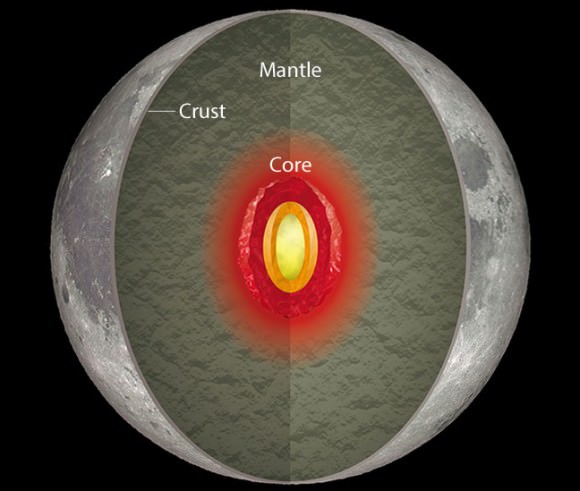
The presence of water has also been confirmed on the Moon, the majority of which is located at the poles in permanently-shadowed craters, and possibly also in reservoirs located beneath the lunar surface. The widely accepted theory is that most of the water was created through the Moon’s interaction of solar wind – where protons collided with oxygen in the lunar dust to create H²O – while the rest was deposited by cometary impacts.
Surface Features:
The geology of the Moon (aka. selenology) is quite different from that of Earth. Since the Moon lacks a significant atmosphere, it does not experience weather – hence there is no wind erosion. Similarly, since it lacks liquid water, there is also no erosion caused by flowing water on its surface. Because of its small size and lower gravity, the Moon cooled more rapidly after forming, and does not experience tectonic plate activity.
Instead, the complex geomorphology of the lunar surface is caused by a combination of processes, particularly impact cratering and volcanoes. Together, these forces have created a lunar landscape that is characterized by impact craters, their ejecta, volcanoes, lava flows, highlands, depressions, wrinkle ridges and grabens.
The most distinctive aspect of the Moon is the contrast between its bright and dark zones. The lighter surfaces are known as the “lunar highlands” while the darker plains are called maria (derived from the Latin mare, for “sea”). The highlands are made of igneous rock that is predominately composed of feldspar, but also contains trace amounts of magnesium, iron, pyroxene, ilmenite, magnetite, and olivine.
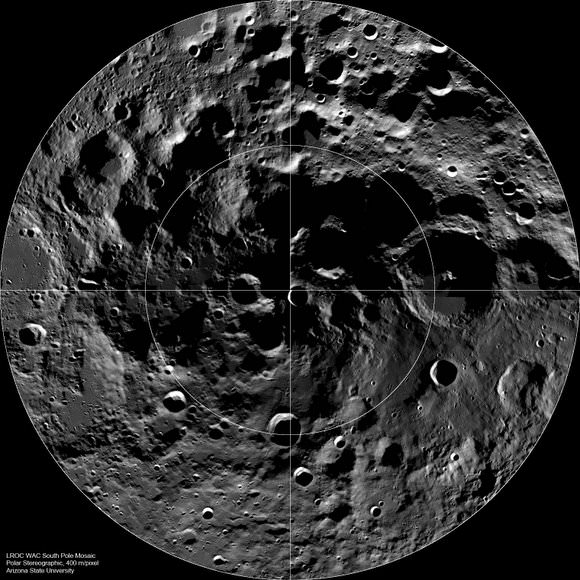
Mare regions, in contrast, are formed from basalt (i.e. volcanic) rock. The maria regions often coincide with the “lowlands,” but it is important to note that the lowlands (such as within the South Pole-Aitken basin) are not always covered by maria. The highlands are older than the visible maria, and hence are more heavily cratered.
Other features include rilles, which are long, narrow depressions that resemble channels. These generally fall into one of three categories: sinuous rilles, which follow meandering paths; arcuate rilles, which have a smooth curve; and linear rilles, which follow straight paths. These features are often the result of the formation of localized lava tubes that have since cooled and collapsed, and can be traced back to their source (old volcanic vents or lunar domes).
Lunar domes are another feature that is related to volcanic activity. When relatively viscous, possibly silica-rich lava erupts from local vents, it forms shield volcanoes that are referred to as lunar domes. These wide, rounded, circular features have gentle slopes, typically measure 8-12 km in diameter and rise to an elevation of a few hundred meters at their midpoint.
Wrinkle ridges are features created by compressive tectonic forces within the maria. These features represent buckling of the surface and form long ridges across parts of the maria. Grabens are tectonic features that form under extension stresses and which are structurally composed of two normal faults, with a down-dropped block between them. Most grabens are found within the lunar maria near the edges of large impact basins.
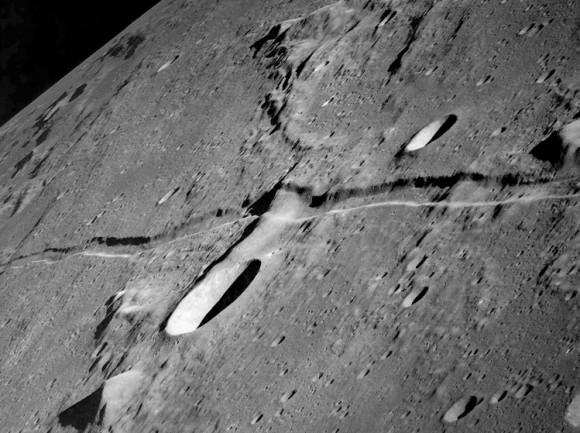
Impact craters are the Moon’s most common feature, and are created when a solid body (an asteroid or comet) collides with the surface at a high velocity. The kinetic energy of the impact creates a compression shock wave that creates a depression, followed by a rarefaction wave that propels most of the ejecta out of the crater, and then a rebounds to form a central peak.
These craters range in size from tiny pits to the immense South Pole–Aitken Basin, which has a diameter of nearly 2,500 km and a depth of 13 km. In general, the lunar history of impact cratering follows a trend of decreasing crater size with time. In particular, the largest impact basins were formed during the early periods, and these were successively overlaid by smaller craters.
There are estimated to be roughly 300,000 craters wider than 1 km (0.6 mi) on the Moon’s near side alone. Some of these are named for scholars, scientists, artists and explorers. The lack of an atmosphere, weather and recent geological processes mean that many of these craters are well-preserved.
Another feature of the lunar surface is the presence of regolith (aka. Moon dust, lunar soil). Created by billions of years of collisions by asteroids and comets, this fine grain of crystallized dust covers much of the lunar surface. The regolith contains rocks, fragments of minerals from the original bedrock, and glassy particles formed during the impacts.
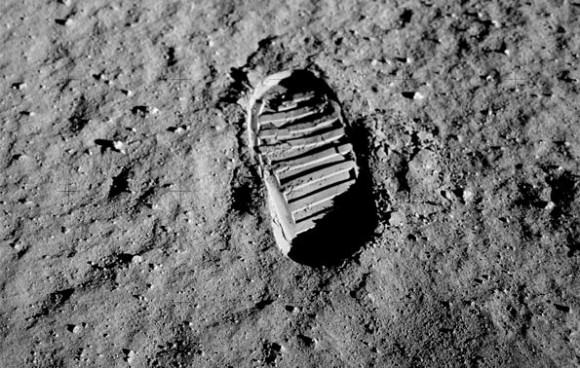
The chemical composition of the regolith varies according to its location. Whereas the regolith in the highlands is rich in aluminum and silica, the regolith in the maria is rich in iron and magnesium and is silica-poor, as are the basaltic rocks from which it is formed.
Geological studies of the Moon are based on a combination of Earth-based telescope observations, measurements from orbiting spacecraft, lunar samples, and geophysical data. A few locations were sampled directly during the Apollo missions in the late 1960s and early 1970s, which returned approximately 380 kilograms (838 lb) of lunar rock and soil to Earth, as well as several missions of the Soviet Luna programme.
Atmosphere:
Much like Mercury, the Moon has a tenuous atmosphere (known as an exosphere), which results in severe temperature variations. These range from -153°C to 107°C on average, though temperatures as low as -249°C have been recorded. Measurements from NASA’s LADEE have mission determined the exosphere is mostly made up of helium, neon and argon.
The helium and neon are the result of solar wind while the argon comes from the natural, radioactive decay of potassium in the Moon’s interior. There is also evidence of frozen water existing in permanently shadowed craters, and potentially below the soil itself. The water may have been blown in by the solar wind or deposited by comets.
Formation:
Several theories have been proposed for the formation of the Moon. These include the fission of the Moon from the Earth’s crust through centrifugal force, the Moon being a preformed object that was captured by Earth’s gravity, and the Earth and Moon co-forming together in the primordial accretion disk. The estimated age of the Moon also ranges from it being formed 4.40-4.45 billion years ago to 4.527 ± 0.010 billion years ago, roughly 30–50 million years after the formation of the Solar System.
The prevailing hypothesis today is that the Earth-Moon system formed as a result of an impact between the newly-formed proto-Earth and a Mars-sized object (named Theia) roughly 4.5 billion years ago. This impact would have blasted material from both objects into orbit, where it eventually accreted to form the Moon.
This has become the most accepted hypothesis for several reasons. For one, such impacts were common in the early Solar System, and computer simulations modelling the impact are consistent with the measurements of the Earth-Moon system’s angular momentum, as well as the small size of the lunar core.
In addition, examinations of various meteorites show that other inner Solar System bodies (such as Mars and Vesta) have very different oxygen and tungsten isotopic compositions to Earth. In contrast, examinations of the lunar rocks brought back by the Apollo missions show that Earth and the Moon have nearly identical isotopic compositions.
This is the most compelling evidence suggesting that the Earth and the Moon have a common origin.
Relationship to Earth:
The Moon makes a complete orbit around Earth with respect to the fixed stars about once every 27.3 days (its sidereal period). However, because Earth is moving in its orbit around the Sun at the same time, it takes slightly longer for the Moon to show the same phase to Earth, which is about 29.5 days (its synodic period). The presence of the Moon in orbit influences conditions here on Earth in a number of ways.
The most immediate and obvious are the ways its gravity pulls on Earth – aka. it’s tidal effects. The result of this is an elevated sea level, which are commonly referred to as ocean tides. Because Earth spins about 27 times faster than the Moon moves around it, the bulges are dragged along with Earth’s surface faster than the Moon moves, rotating around Earth once a day as it spins on its axis.
The ocean tides are magnified by other effects, such as frictional coupling of water to Earth’s rotation through the ocean floors, the inertia of water’s movement, ocean basins that get shallower near land, and oscillations between different ocean basins. The gravitational attraction of the Sun on Earth’s oceans is almost half that of the Moon, and their gravitational interplay is responsible for spring and neap tides.
Gravitational coupling between the Moon and the bulge nearest the Moon acts as a torque on Earth’s rotation, draining angular momentum and rotational kinetic energy from Earth’s spin. In turn, angular momentum is added to the Moon’s orbit, accelerating it, which lifts the Moon into a higher orbit with a longer period.
As a result of this, the distance between Earth and Moon is increasing, and Earth’s spin is slowing down. Measurements from lunar ranging experiments with laser reflectors (which were left behind during the Apollo missions) have found that the Moon’s distance to Earth increases by 38 mm (1.5 in) per year.
This speeding and slowing of Earth and the Moon’s rotation will eventually result in a mutual tidal locking between the Earth and Moon, similar to what Pluto and Charon experience. However, such a scenario is likely to take billions of years, and the Sun is expected to have become a red giant and engulf Earth long before that.
The lunar surface also experiences tides of around 10 cm (4 in) amplitude over 27 days, with two components: a fixed one due to Earth (because they are in synchronous rotation) and a varying component from the Sun. The cumulative stress caused by these tidal forces produces moonquakes. Despite being less common and weaker than earthquakes, moonquakes can last longer (one hour) since there is no water to damp out the vibrations.
Another way the Moon effects life on Earth is through occultation (i.e. eclipses). These only happen when the Sun, the Moon, and Earth are in a straight line, and take one of two forms – a lunar eclipse and a solar eclipse. A lunar eclipse occurs when a full Moon passes behind Earth’s shadow (umbra) relative to the Sun, which causes it to darken and take on a reddish appearance (aka. a “Blood Moon” or “Sanguine Moon”.)
A solar eclipse occurs during a new Moon, when the Moon is between the Sun and Earth. Since they are the same apparent size in the sky, the moon can either partially block the Sun (annular eclipse) or fully block it (total eclipse). In the case of a total eclipse, the Moon completely covers the disc of the Sun and the solar corona becomes visible to the naked eye.
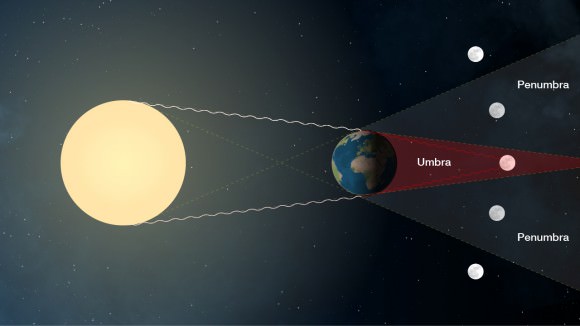
Because the Moon’s orbit around Earth is inclined by about 5° to the orbit of Earth around the Sun, eclipses do not occur at every full and new moon. For an eclipse to occur, the Moon must be near the intersection of the two orbital planes.The periodicity and recurrence of eclipses of the Sun by the Moon, and of the Moon by Earth, is described by the “Saros Cycle“, which is a period of approximately 18 years.
History of Observation:
Human beings have been observing the Moon since prehistoric times, and understanding the Moon’s cycles was one of the earliest developments in astronomy. The earliest examples of this comes from the 5th century BCE, when Babylonian astronomers had recorded the 18-year Satros cycle of lunar eclipses, and Indian astronomers had described the Moon’s monthly elongation.
The ancient Greek philosopher Anaxagoras (ca. 510 – 428 BCE) reasoned that the Sun and Moon were both giant spherical rocks, and the latter reflected the light of the former. In Aristotle’s “On the Heavens“, which he wrote in 350 BCE, the Moon was said to mark the boundary between the spheres of the mutable elements (earth, water, air and fire), and the heavenly stars – an influential philosophy that would dominate for centuries.
In the 2nd century BCE, Seleucus of Seleucia correctly theorized that tides were due to the attraction of the Moon, and that their height depends on the Moon’s position relative to the Sun. In the same century, Aristarchus computed the size and distance of the Moon from Earth, obtaining a value of about twenty times the radius of Earth for the distance. These figures were greatly improved by Ptolemy (90–168 BCE), who’s values of a mean distance of 59 times Earth’s radius and a diameter of 0.292 Earth diameters were close to the correct values (60 and 0.273 respectively).
By the 4th century BCE, the Chinese astronomer Shi Shen gave instructions for predicting solar and lunar eclipses. By the time of the Han Dynasty (206 BCE – 220 CE), astronomers recognized that moonlight was reflected from the Sun, and Jin Fang (78–37 BC) postulated that the Moon was spherical in shape.
In 499 CE, the Indian astronomer Aryabhata mentioned in his Aryabhatiya that reflected sunlight is the cause of the shining of the Moon. The astronomer and physicist Alhazen (965–1039) found that sunlight was not reflected from the Moon like a mirror, but that light was emitted from every part of the Moon in all directions.
Shen Kuo (1031–1095) of the Song dynasty created an allegory to explain the waxing and waning phases of the Moon. According to Shen, it was comparable to a round ball of reflective silver that, when doused with white powder and viewed from the side, would appear to be a crescent.
During the Middle Ages, before the invention of the telescope, the Moon was increasingly recognized as a sphere, though many believed that it was “perfectly smooth”. In keeping with medieval astronomy, which combined Aristotle’s theories of the universe with Christian dogma, this view would later be challenged as part of the Scientific Revolution (during the 16th and 17th century) where the Moon and other planets would come to be seen as being similar to Earth.
Using a telescope of his own design, Galileo Galilei drew one of the first telescopic drawings of the Moon in 1609, which he included in his book Sidereus Nuncius (“Starry Messenger). From his observations, he noted that the Moon was not smooth, but had mountains and craters. These observations, coupled with observations of moons orbiting Jupiter, helped him to advance the heliocentric model of the universe.
Telescopic mapping of the Moon followed, which led to the lunar features being mapped in detail and named. The names assigned by Italian astronomers Giovannia Battista Riccioli and Francesco Maria Grimaldi are still in use today. The lunar map and book on lunar features created by German astronomers Wilhelm Beer and Johann Heinrich Mädler between 1834 and 1837 were the first accurate trigonometric study of lunar features, and included the heights of more than a thousand mountains.
Lunar craters, first noted by Galileo, were thought to be volcanic until the 1870s, when English astronomer Richard Proctor proposed that they were formed by collisions. This view gained support throughout the remainder of the 19th century; and by the early 20th century, led to the development of lunar stratigraphy – part of the growing field of astrogeology.
Exploration:
With the beginning of the Space Age in the mid-20th century, the ability to physically explore the Moon became possible for the first time. And with the onset of the Cold War, both the Soviet and American space programs became locked in an ongoing effort to reach the Moon first. This initially consisted of sending probes on flybys and landers to the surface, and culminated with astronauts making manned missions.
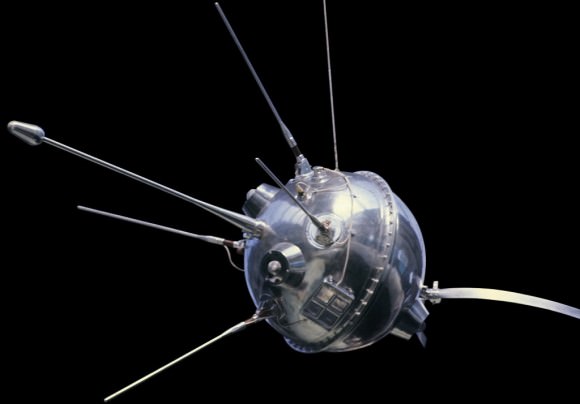
Exploration of the Moon began in earnest with the Soviet Luna program. Beginning in earnest in 1958, the programmed suffered the loss of three unmanned probes. But by 1959, the Soviets managed to successfully dispatch fifteen robotic spacecraft to the Moon and accomplished many firsts in space exploration. This included the first human-made objects to escape Earth’s gravity (Luna 1), the first human-made object to impact the lunar surface (Luna 2), and the first photographs of the far side of the Moon (Luna 3).
Between 1959 and 1979, the program also managed to make the first successful soft landing on the Moon (Luna 9), and the first unmanned vehicle to orbit the Moon (Luna 10) – both in 1966. Rock and soil samples were brought back to Earth by three Luna sample return missions – Luna 16 (1970), Luna 20 (1972), and Luna 24 (1976).
Two pioneering robotic rovers landed on the Moon – Luna 17 (1970) and Luna 21 (1973) – as a part of Soviet Lunokhod program. Running from 1969 to 1977, this program was primarily designed to provide support for the planned Soviet manned moon missions. But with the cancellation of the Soviet manned moon program, they were instead used as remote-controlled robots to photograph and explore the lunar surface.
NASA began launching probes to provide information and support for an eventual Moon landing in the early 60s. This took the form of the Ranger program, which ran from 1961 – 1965 and produced the first close-up pictures of the lunar landscape. It was followed by the Lunar Orbiter program which produced maps of the entire Moon between 1966-67, and the Surveyor program which sent robotic landers to the surface between 1966-68.
In 1969, astronaut Neil Armstrong made history by becoming the first person to walk on the Moon. As the commander of the American mission Apollo 11, he first sett foot on the Moon at 02:56 UTC on 21 July 1969. This represented the culmination of the Apollo program (1969-1972), which sought to send astronauts to the lunar surface to conduct research and be the first human beings to set foot on a celestial body other than Earth.
The Apollo 11 to 17 missions (save for Apollo 13, which aborted its planned lunar landing) sent a total of 13 astronauts to the lunar surface and returned 380.05 kilograms (837.87 lb) of lunar rock and soil. Scientific instrument packages were also installed on the lunar surface during all the Apollo landings. Long-lived instrument stations, including heat flow probes, seismometers, and magnetometers, were installed at the Apollo 12, 14, 15, 16, and 17 landing sites, some of which are still operational.
After the Moon Race was over, there was a lull in lunar missions. However, by the 1990s, many more countries became involve in space exploration. In 1990, Japan became the third country to place a spacecraft into lunar orbit with its Hiten spacecraft, an orbiter which released the smaller Hagoroma probe.
In 1994, the U.S. sent the joint Defense Department/NASA spacecraft Clementine to lunar orbit to obtain the first near-global topographic map of the Moon and the first global multispectral images of the lunar surface. This was followed in 1998 by the Lunar Prospector mission, whose instruments indicated the presence of excess hydrogen at the lunar poles, which is likely to have been caused by the presence of water ice in the upper few meters of the regolith within permanently shadowed craters.
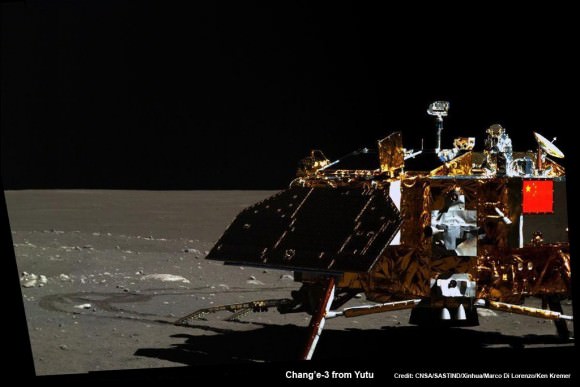
Since the year 2000, exploration of the moon has intensified, with a growing number of parties becoming involved. The ESA’s SMART-1 spacecraft, the second ion-propelled spacecraft ever created, made the first detailed survey of chemical elements on the lunar surface while in orbit from November 15th, 2004, until its lunar impact on September 3rd, 2006.
China has pursued an ambitious program of lunar exploration under their Chang’e program. This began with Chang’e 1, which successfully obtained a full image map of the Moon during its sixteen month orbit (November 5th, 2007 – March 1st, 2009) of the Moon. This was followed in October of 2010 with the Chang’e 2 spacecraft, which mapped the Moon at a higher resolution before performing a flyby of asteroid 4179 Toutatis in December of 2012, then heading off into deep space.
On 14 December 2013, Chang’e 3 improved upon its orbital mission predecessors by landing a lunar lander onto the Moon’s surface, which in turn deployed a lunar rover named Yutu (literally “Jade Rabbit”). In so doing, Chang’e 3 made the first soft lunar landing since Luna 24 in 1976, and the first lunar rover mission since Lunokhod 2 in 1973.
Between October 4th, 2007, and June 10th, 2009, the Japan Aerospace Exploration Agency‘s (JAXA) Kaguya (“Selene”) mission – a lunar orbiter fitted with a high-definition video camera and two small radio-transmitter satellites – obtained lunar geophysics data and took the first high-definition movies from beyond Earth orbit.
The Indian Space Research Organisation (ISRO) first lunar mission, Chandrayaan I, orbited the Moon between November 2008 and August 2009 and created a high resolution chemical, mineralogical and photo-geological map of the lunar surface, as well as confirming the presence of water molecules in lunar soil. A second mission was planned for 2013 in collaboration with Roscosmos, but was cancelled.
NASA has also been busy in the new millennium. In 2009, they co-launched the Lunar Reconnaissance Orbiter (LRO) and the Lunar CRater Observation and Sensing Satellite (LCROSS) impactor. LCROSS completed its mission by making a widely observed impact in the crater Cabeus on October 9th, 2009, while the LRO is currently obtaining precise lunar altimetry and high-resolution imagery.
Two NASA Gravity Recovery And Interior Library (GRAIL) spacecraft began orbiting the Moon in January 2012 as part of a mission to learn more about the Moon’s internal structure.
Upcoming lunar missions include Russia’s Luna-Glob – an unmanned lander with a set of seismometers, and an orbiter based on its failed Martian Fobos-Grunt mission. Privately funded lunar exploration has also been promoted by the Google Lunar X Prize, which was announced on September 13th, 2007, and offers US$20 million to anyone who can land a robotic rover on the Moon and meet other specified criteria.
Under the terms of the Outer Space Treaty, the Moon remains free to all nations to explore for peaceful purposes. As our efforts to explore space continue, plans to create a lunar base and possibly even a permanent settlement may become a reality. Looking to the distant future, it wouldn’t be far fetched at all to imagine native-born humans living on the Moon, perhaps known as Lunarians (though I imagine Lunies will be more popular!)
We have many interesting articles about the Moon here at Universe Today. Below is a list that covers just about everything we know about it today. We hope you find what you are looking for:
- A Red Moon – Not a Sign of the Apocalypse!
- Africa’s First Mission to the Moon Announced
- Age of the Moon
- Building a Moon Base: Part I – Challenges and Hazards
- Building a Moon Base: Part II – Habitat Concepts
- Building a Moon Base: Part III – Structural Designs
- Building a Moon Base: Part IV – Infrastructure and Transportation
- Could We Terraform the Moon?
- Diameter of the Moon
- Did We Need the Moon for Life?
- Does the Moon Rotate?
- Earth’s Second Moon Is About To Leave Us
- Edwin “Buzz” Aldrin – the Second Man on the Moon
- Golden Spike To Offer Commercial Human Missions To The Moon
- Gravity On The Moon
- How Can You See the Moon and the Sun at the Same Time?
- How Could We Destroy the Moon?
- How Do We Know the Moon Landing Isn’t Faked?
- How Did the Moon Form?
- How Long Does it Take to Get to the Moon?
- How Many People Have Walked on the Moon?
- How NASA Filmed Humans Leaving the Moon 42 Years Ago
- Is It Time to Return to the Moon?
- Is The Moon a Planet?
- Let’s Send Neil Back To The Moon
- Make a Deal For Land on the Moon
- Neil Armstrong; 1st Human on the Moon – Apollo 11, Tributes and Photo Gallery
- Neutral Hydrogen Bouncing off the Moon
- Old NASA Equipment Will Be Visible On The Moon
- Should We Go Back to Mars or the Moon?
- The Moon is Just 95 Million Years Younger Than The Solar System
- The Moon is Toxic?
- The Sun and the Moon
- There’s Poop On The Moon
- There Could be Lava Tubes on the Moon Large Enough For Whole Cities
- This is the Moon, the Whole Moon, and Nothing but the Moon
- Making the Moon: The Practice Crater Fields of Flagstaff, Arizona
- Neil Armstrong: The First Man To Walk On The Moon
- New Crater On The Moon
- Water On The Moon Was Blown In By Solar Wind
- What are the Phases of the Moon?
- What Is A Moon?
- What Color is the Moon?
- What Is The Gibbous Moon?
- What Is The Moon Made Of?
- What Is The Moon’s Real Name?
- What is the Distance to the Moon?
- What’s On The Far Side Of The Moon?
- Where We You When Apollo 11 Landed on the Moon?
- Who Were the First Men on the Moon?
- Why Does the “Man In the Moon” Face Earth?
- Why Does the Moon Look So Big Tonight?
- Why Does the Moon Shine?
- Why Doesn’t the Sun Steal the Moon?
- Why Is The Moon Leaving Us?
- Why There are no Lunar “Seas” on the Far Side of the Moon
- Yes, There’s Water on the Moon
- You Could Fit All the Planets Between the Earth and the Moon?
NASA’s Highly Productive LADEE Dust Explorer Probe Crashes into the Moon as Planned
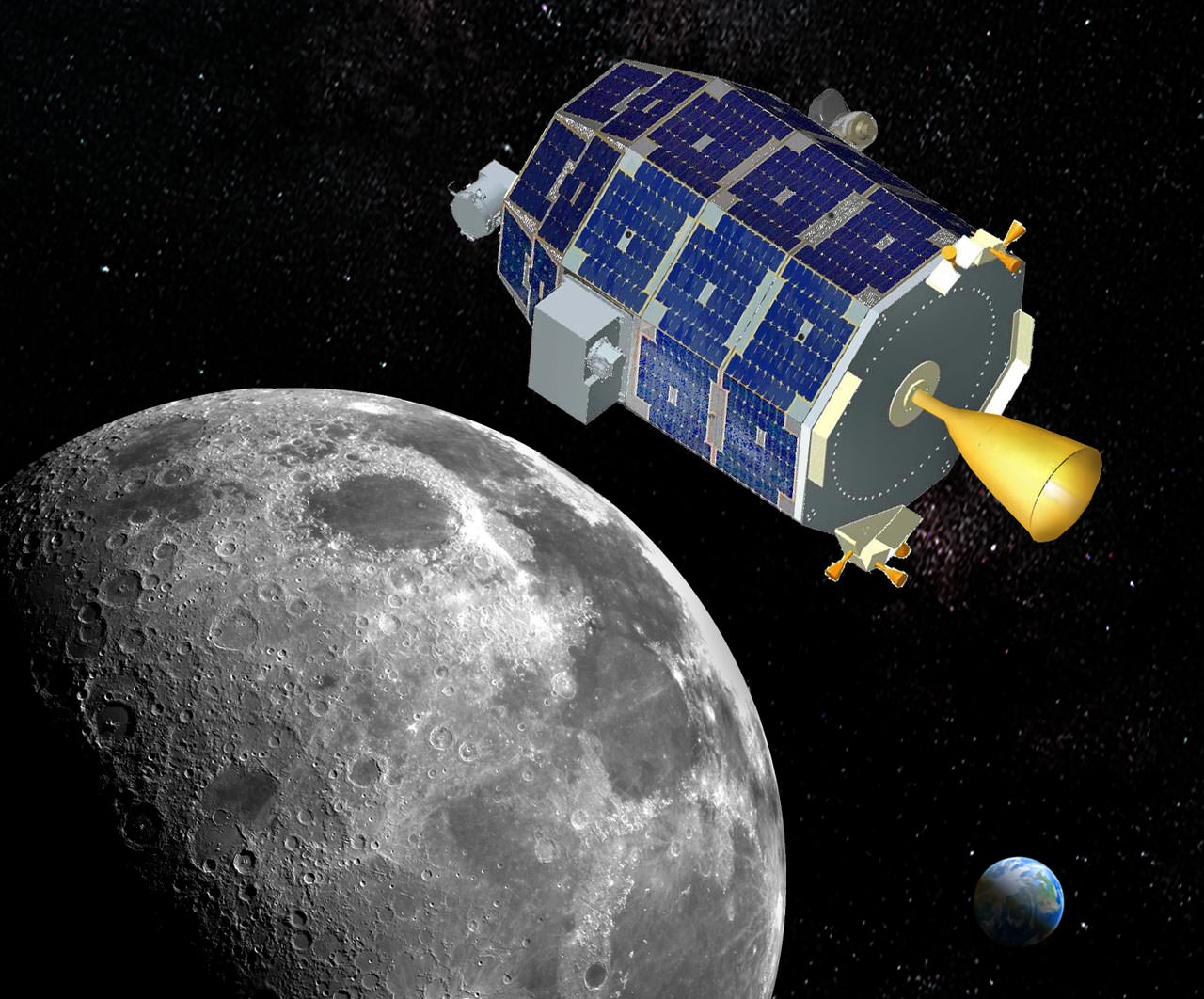
NASA’s LADEE lunar orbiting dust and atmosphere explorer probe has bitten the dust and crashed into the Moon’s surface exactly as planned following a fabulously successful and groundbreaking science mission that exceeded all expectations.
The Lunar Atmosphere and Dust Environment Explorer (LADEE) spacecraft impacted the far side of the Moon sometime overnight between 12:30-1:22 a.m. EDT, Friday, April 18 (9:30 and 10:22 p.m. PDT, Thursday, April 17) according to a NASA statement.
Running low on fuel and unable to continue any further science observations, the couch sized spacecraft was intentionally plunged into the rugged lunar surface at a spot designed to keep it far away from disturbing any of the historic Apollo manned lunar landing sites or unmanned surveyors on the Moon’s near side.
Mission controllers at NASA’s Ames Research Center allowed LADEE’s orbit to naturally decay following the conclusion of the probes extended mission in the final low orbit science phase.
The probe was likely smashed violently to smithereens and mostly vaporized from the heat generated upwards of several hundred degrees. Any surviving debris may be buried in shallow crater formed by the impact.
“At the time of impact, LADEE was traveling at a speed of 3,600 miles per hour – about three times the speed of a high-powered rifle bullet,” said Rick Elphic, LADEE project scientist at Ames, in a NASA statement.
“There’s nothing gentle about impact at these speeds – it’s just a question of whether LADEE made a localized craterlet on a hillside or scattered debris across a flat area. It will be interesting to see what kind of feature LADEE has created.”
The powerful NAC telescopic camera aboard NASA’s still orbiting Lunar Reconnaissance Orbiter (LRO) will be directed in coming months to try and photograph the impact site after engineers pinpoint the likely crash site.
LRO has already imaged LADEE while both were co-orbiting in different lunar orbits.
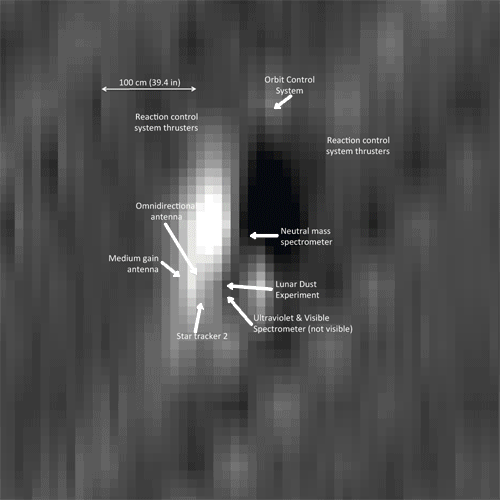
After completing its primary science mission in March, the already ultra low altitude of the lunar orbiting probe was reduced even further so that it was barely skimming just 2 kilometers (1 mile) above the pockmarked lunar surface.
Such a low altitude thus enabled LADEE to gather unprecedented science measurements of the Moon’s extremely tenuous atmosphere and dust particles since the species would be present at a higher concentration.
Lots of fuel is required to maintain LADEE’s orbit due to the uneven nature of the Moon’s global gravity field.
The final engine firing was commanded on April 11 to ensure a far side impact and the safety of all the historic lunar landing sites.
“LADEE also survived the total lunar eclipse on April 14 to 15. This demonstrated the spacecraft’s ability to endure low temperatures and a drain on batteries as it, and the moon, passed through Earth’s deep shadow,” said NASA
LADEE was launched on Sept. 6, 2013 from NASA Wallops in Virginia on a science mission to investigate the composition and properties of the Moon’s pristine and extremely tenuous atmosphere, or exosphere, and untangle the mysteries of its lofted lunar dust dating back to the Apollo Moon landing era.
All those objectives and more were accomplished during its nearly half year investigating Earth’s nearest neighbor.
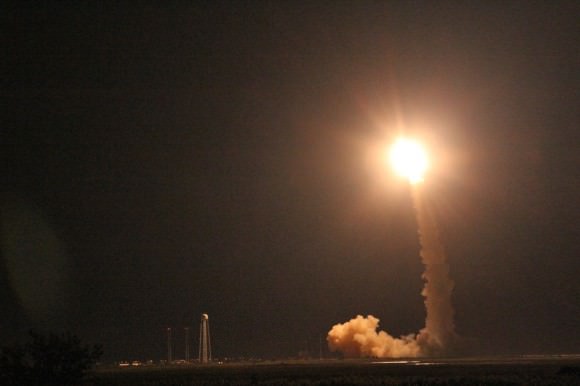
It entered lunar orbit on Oct. 6, 2013 amidst the ridiculous government shutdown that negatively affected a number of science missions funded across the US federal government.
The science mission duration had initially been planned to last approximately 100 days and finish with a final impact on the Moon on about March 24th.
NASA granted LADEE a month long extension since the residual rocket fuel was more than anticipated due to the expertise of LADEE’s navigation engineers and the precision of the launch atop the Orbital Sciences Minotaur V rocket and orbital insertion.
“It’s bittersweet knowing we have received the final transmission from the LADEE spacecraft after spending years building it in-house at Ames, and then being in constant contact as it circled the moon for the last several months,” said Butler Hine, LADEE project manager at Ames.
The 844 pound (383 kg) robot explorer was assembled at NASA’s Ames Research Center, Moffett Field, Calif., and is a cooperative project with NASA Goddard Spaceflight Center in Maryland.
The $280 million probe is built on a revolutionary ‘modular common spacecraft bus’, or body, that could dramatically cut the cost of exploring space and also be utilized on space probes to explore a wide variety of inviting targets in the solar system.
Stay tuned here for Ken’s continuing LADEE, Chang’e-3, Orion, Orbital Sciences, SpaceX, commercial space, Mars rover and more planetary and human spaceflight news.
